Nellore’s history goes back by more than 1500 years, the territory along the River Penna formed the northern most boundary of the Pallavas, Cholas and most of the ancient South Indian kingdoms. Vikramasimhapuri as the place was known in the 11th and 12th centuries was also the capital of the Nellore Chola kings. Summing up the entire history of the city and connecting the ancient world of Vikramasimhapuri with today’s fast developing, yet chaotic city of Nellore is the Talpagiri Ranganathasway Temple.
On New Year’s day, we paid a visit to the temple, we were scheduled to travel back to Hyderabad the next day and we wanted to make the best use of the time that was left of our year end vacation.
Nellore’s icon: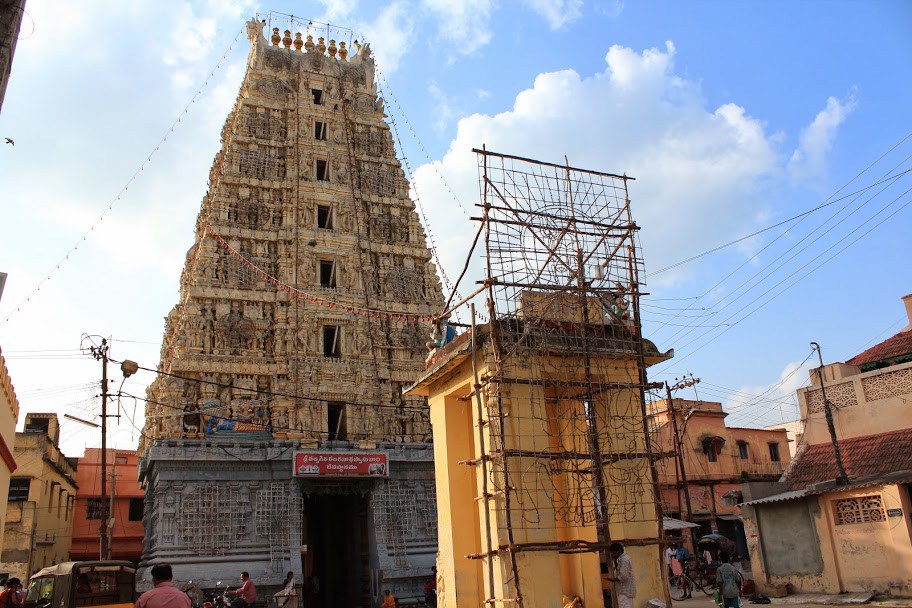
When you enter Nellore after crossing the Penna River, the first thing that catches your eye is the Gali Gopuram of the Talpagiri Ranganathaswamy Temple and every time a train pulls out of the Nellore station, the last thing that remains within your sight while leaving Nellore is the temple tower. The Ranganathaswamy temple’s close to 100 feet Gali Gopuram is the iconic structure of Nellore.Built on the banks of the Penna River, the temple dates back to the 7th-8th Centuries A.D when this region was under Pallavas, according to the temple’s records, it came into existence during the Pallava reign. The main shrine and further extensions were built during the Cholas rule in the 12th Century A.D and the grand Raja Gopuram was built in the 1800s.
The name Talpagiri comes from the legend which says Adi Sesha took the form of hill here when Lord Vishnu descended on earth and rested here, Talpa refers to couch of Snake Adi Sesha on which Lord Vishnu reclines.
East or West, Lord Ranga is the best !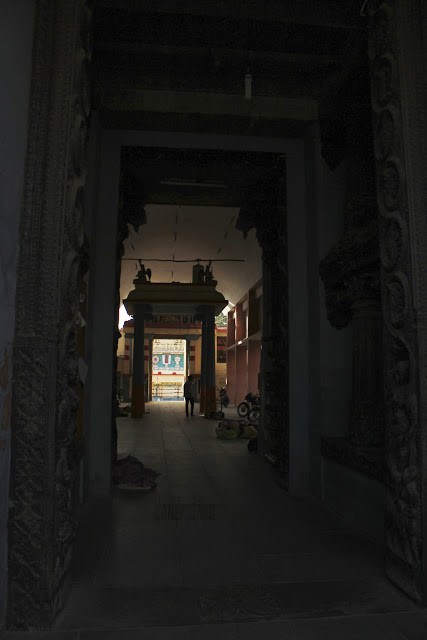
The Raja Gopuram, does not directly lead you to the temple but you have a pass through a street of living quarters, similar to the Srirangam temple, only on a much scaled down level ! When we tried clicking pictures of the street leading to the temple, our camera came up with us.Obviously, we had messed up the settings but we kind of liked the idea of the light of God at the end of the darkness !
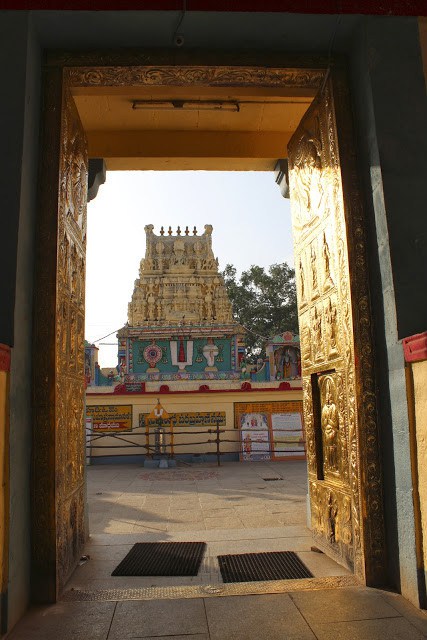 One of the interesting things about the Talpagiri Ranganathaswamy Temple is that the idol faces West towards the River Penna unlike most temples where the Deity faces the East. So when you enter the temple from the East/city side through the Raja Gopuram, you will first see the wall of the Garbha Griha.
One of the interesting things about the Talpagiri Ranganathaswamy Temple is that the idol faces West towards the River Penna unlike most temples where the Deity faces the East. So when you enter the temple from the East/city side through the Raja Gopuram, you will first see the wall of the Garbha Griha.
There was a vague story back in our childhood that Lord Ranganatha was angered by the “Adharma” of the Kaliyuga and turned his face away from the city ! There were days when we believed the story and imagined the angry Deity turning away to face the West ! The directions do not matter because, as soon as you enter, you are taken over by the serenity of the temple.
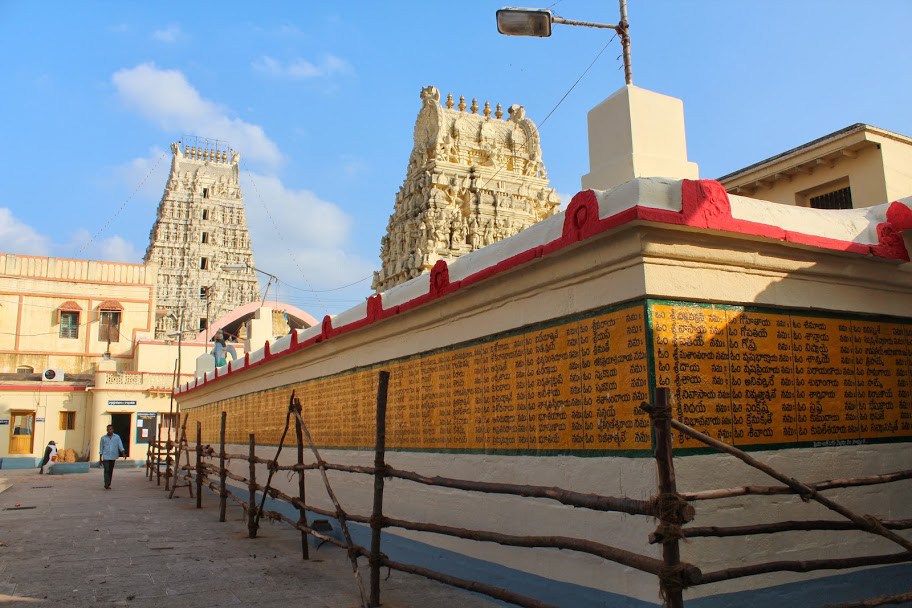 The structure that stands today is a renovated version of the original temple. On most days the temple is not crowded and you have the spacious, quiet and peaceful environs all to yourself.
The structure that stands today is a renovated version of the original temple. On most days the temple is not crowded and you have the spacious, quiet and peaceful environs all to yourself.
Relaxing by the Pinakini !
 The entrance to the Garbha Griha is through a small door on the South side of the temple.
The entrance to the Garbha Griha is through a small door on the South side of the temple.
The idol of Lord Ranganatha or Ranganayakulu as known locally or Pallikonda Perumal (The Reclining Lord Narayana) is inside the Garbha Griha. Another deviation from the usual Ranganathaswamy idols is that the Ranganayaka Swamy of Nellore reclines in an opposite direction, if you visit the other temples dedicated to Lord Ranga, you will know the difference. This again could be due to the vastu specifications of a West facing temple. The eyes of the idol are so bright and lifelike that you feel the Lord is going to stand up any moment and talk to you ! The good thing about this temple is that one can go right upto the threshold of the Garbhalaya and have a darshan as long as you want, except on important festival days when the temple is usually crowded.
There are shrines for other Deities outside the Sanctum, including Lord Ranganatha’s consort, Goddess Ranganayaki. There is also an Alwar Sannidhi for the 12 Alwars, a shrine for Lord Narasimha and Lord Venkateshwara.
What really adds to the spiritual bliss of the place is the River Penna or Pinakini, 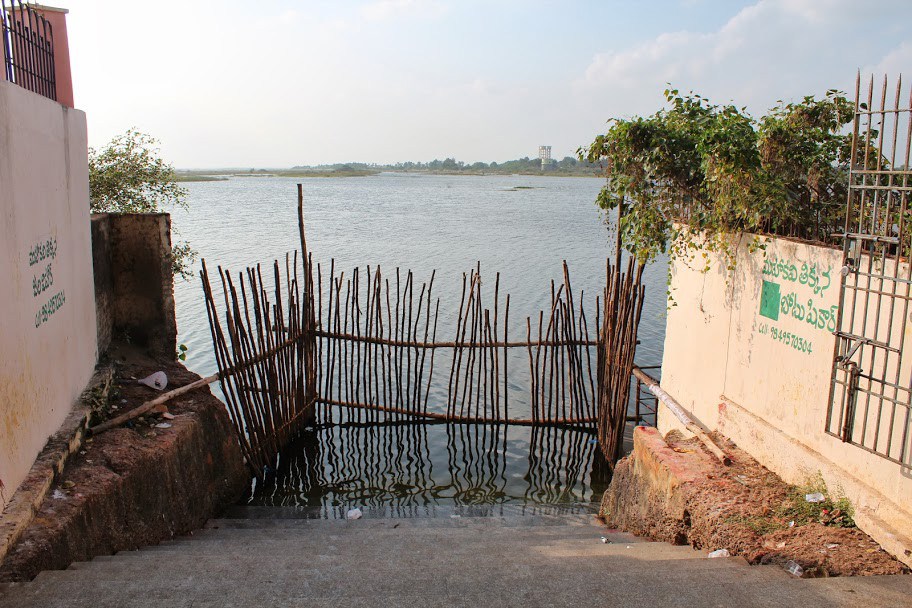 as it was known in ancient times, flowing at the foot of the temple. You wouldn’t find water in the river anywhere else in its course near Nellore except here ! This spot is a great place to view the sunset.There goes a story that the main idol was actually found floating in the Penna and was installed on the banks of the river.
as it was known in ancient times, flowing at the foot of the temple. You wouldn’t find water in the river anywhere else in its course near Nellore except here ! This spot is a great place to view the sunset.There goes a story that the main idol was actually found floating in the Penna and was installed on the banks of the river.
 On the river side is the ancient Gopuram and probably the original entrance to the temple. Even today, there is a door leading to the Sanctum from this Gopuram but it is no longer in use.In days of yore, the idea must have been to reach the temple by boat and enter it from the West, that could be why the Deity faces West.
On the river side is the ancient Gopuram and probably the original entrance to the temple. Even today, there is a door leading to the Sanctum from this Gopuram but it is no longer in use.In days of yore, the idea must have been to reach the temple by boat and enter it from the West, that could be why the Deity faces West.
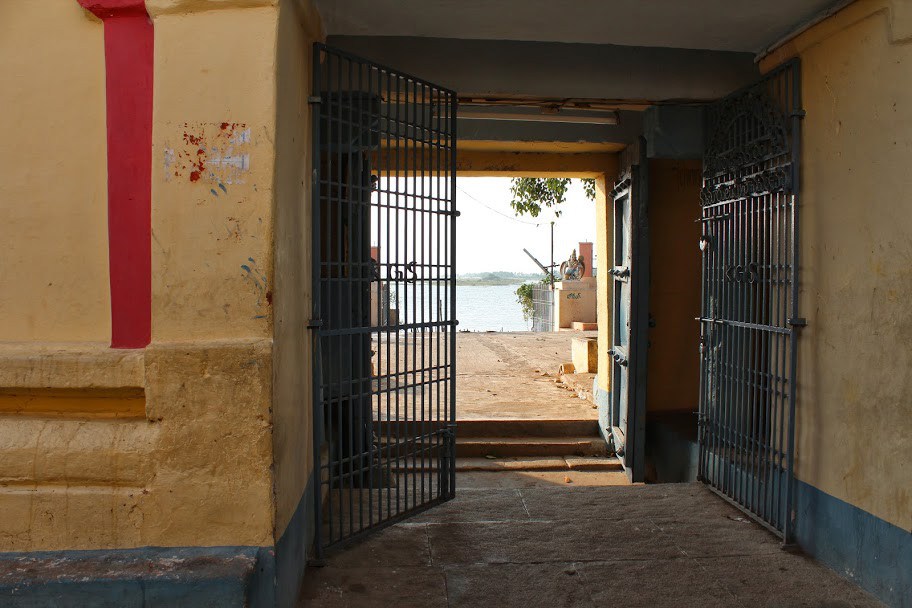 From where the idol is located, you can get a direct view of the river. Maybe the Lord is not angry at all, may be he is just enjoying the view of the river from inside, in a reclining position, the idol does look to be relaxing by the river ! Who wouldn’t enjoy watching a river quietly flowing by?The Rangathaswamy temple and the area around it called Ranganayakulapeta has an old world charm that reminds you of Srirangam, this temple finds a place in the list of prominent temples dedicated to Lord Ranganatha, we take pride in calling it the Srirangam of Andhra Pradesh !
From where the idol is located, you can get a direct view of the river. Maybe the Lord is not angry at all, may be he is just enjoying the view of the river from inside, in a reclining position, the idol does look to be relaxing by the river ! Who wouldn’t enjoy watching a river quietly flowing by?The Rangathaswamy temple and the area around it called Ranganayakulapeta has an old world charm that reminds you of Srirangam, this temple finds a place in the list of prominent temples dedicated to Lord Ranganatha, we take pride in calling it the Srirangam of Andhra Pradesh !
After 7 days of breathing fresh air, binging on home food, traveling and basically having a whale of a time, we returned to Hyderabad, driving 450 kms to work directly from Nellore !
Legend of the Temple
As per the legend, Lord Vishnu wanted to visit Bhooloka along with His consort Goddess Sridevi. He said Adisesha to be the place as Lord’s residence to stay at Bhooloka. Obeying the order of the Lord, Adisesha took the form as a mountain in this place. Thus the place is called as Talpagiri Kshethra. It is believed that sage Kashyapa performed Poundarika Yaga on Ekadasi day here. Lord appeared and blessed him.